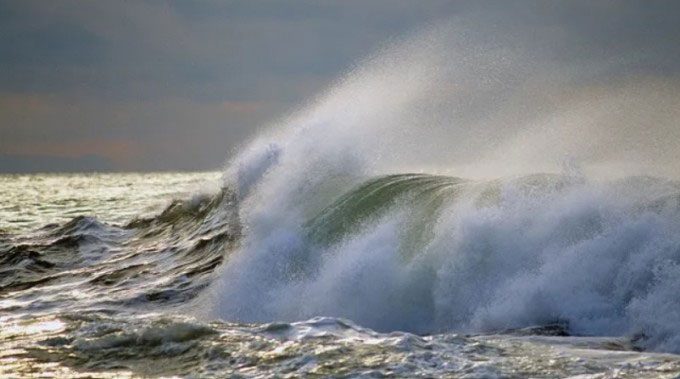The newly discovered water mass named the Atlantic Equatorial Water stretches from Brazil to West Africa.
Scientists have found a previously undiscovered water mass in the middle of the Atlantic Ocean. This massive body of water extends across the Atlantic, from Brazil to the Gulf of Guinea, near West Africa, according to a study published in the journal Geophysical Research Letters. The body of water, referred to as the Atlantic Equatorial Water, formed along the equator as ocean currents mixed water from the northern and southern regions, as reported by Live Science on November 22.

The Atlantic Ocean during a storm. (Photo: Alamy).
Before the discovery of the Atlantic Equatorial Water, scientists had observed mixed water along the equator in the Pacific and Indian Oceans, but such a phenomenon had never been recorded in the Atlantic. According to Viktor Zhurbas, a physicist and oceanographer at the Shirshov Institute in Moscow, the newly identified water mass allows them to refine models of the fundamental water masses around the world.
Not uniform everywhere, ocean water is a patchwork of various interconnected water masses and layers, continuously mixed and separated by ocean currents, eddies, and changes in temperature and salinity. These water masses are distinctive parts of this network, each characterized by similar geographical features, formation history, and common properties such as density and the solubility of oxygen, nitrate, and phosphate. To differentiate between water masses, oceanographers plot the relationship between temperature and salinity across the ocean, combining the two measurements to determine the density of seawater.
In 1942, the temperature-salinity plot led to the discovery of equatorial water in the Pacific and Indian Oceans. Formed from the mixing of water from the north and south, both the Pacific and Indian equatorial waters exhibit temperature and salinity that curve along constant density lines, making them easily distinguishable from surrounding water. However, such a relationship had never been documented in the Atlantic.
To search for the missing water mass, the research team examined data collected by the Argo program, a collection of drifting, automated buoys scattered throughout the world’s oceans. After analyzing the data gathered by the buoy network, the researchers identified a temperature-salinity curve parallel to the curve that marks the central North Atlantic and South Atlantic water masses. This is the Atlantic Equatorial Water. Having identified this water mass, the research team can gain a better understanding of ocean mixing processes, which play a crucial role in the transport of heat, oxygen, and nutrients around the globe, according to Zhurbas.


















































